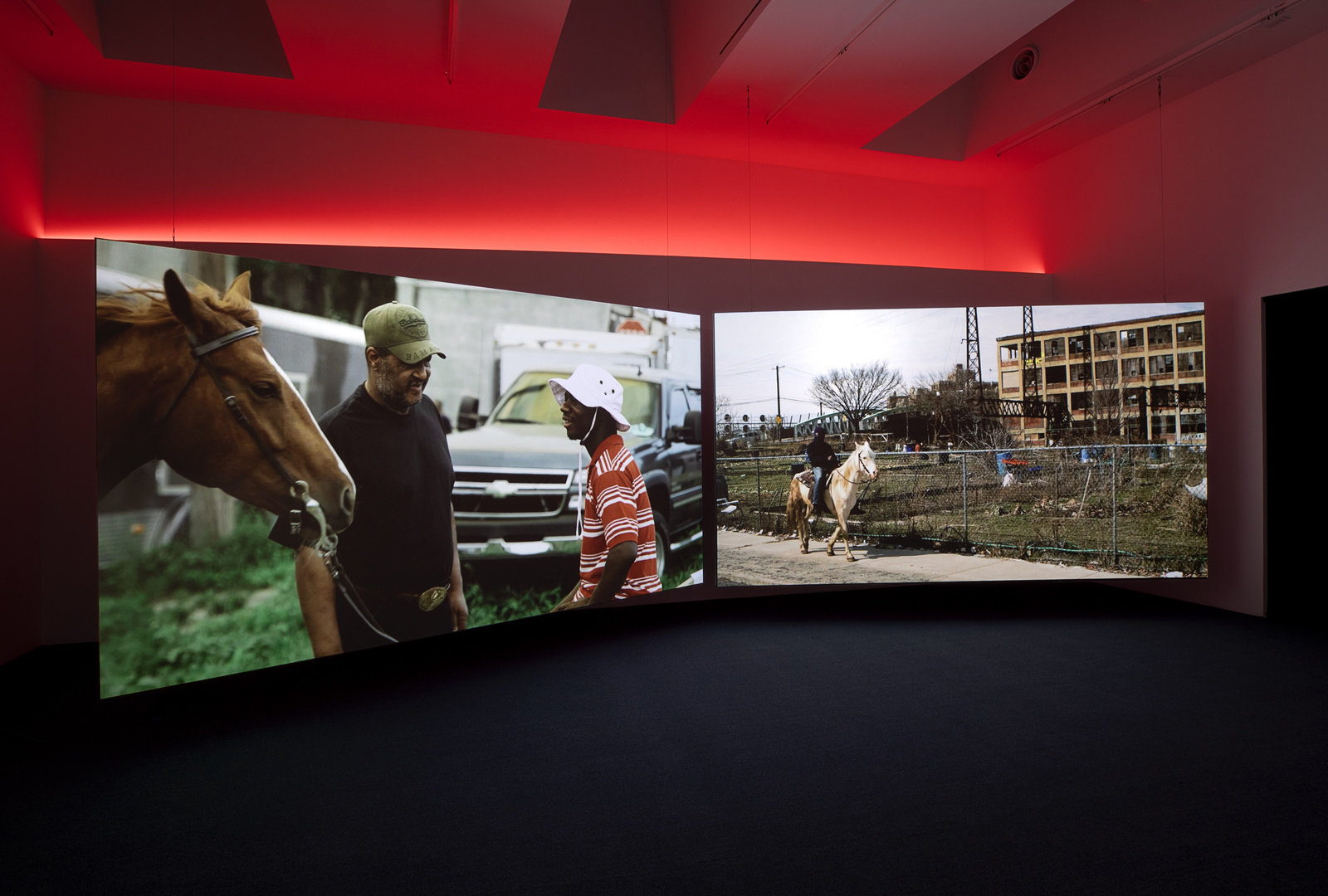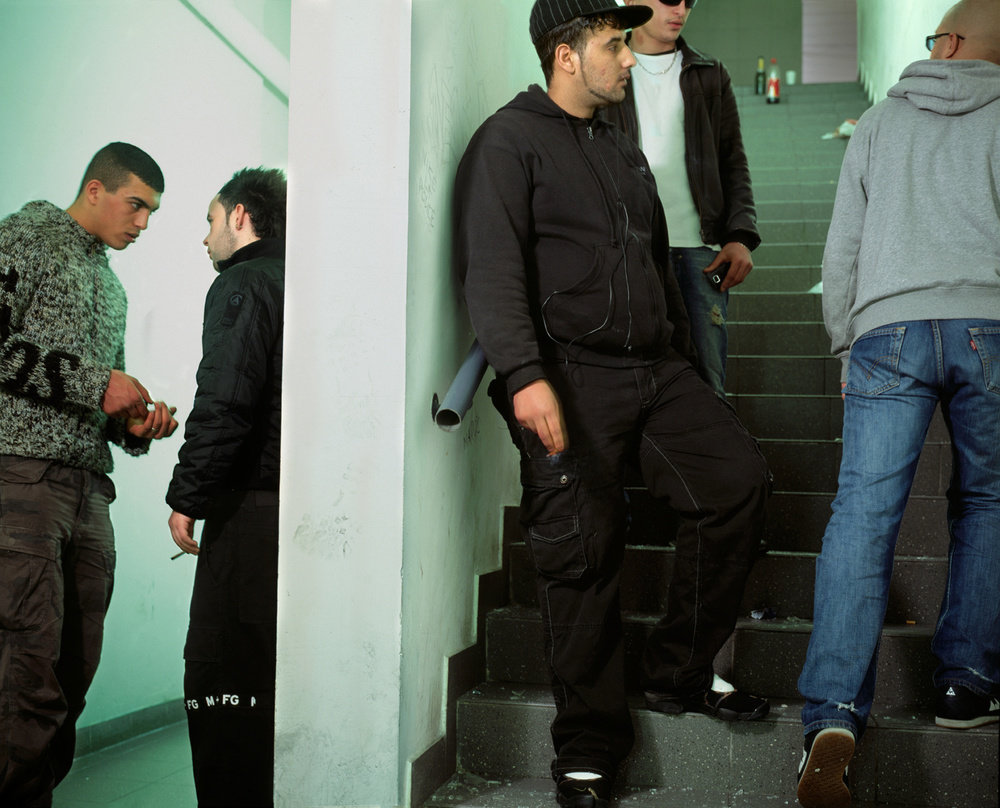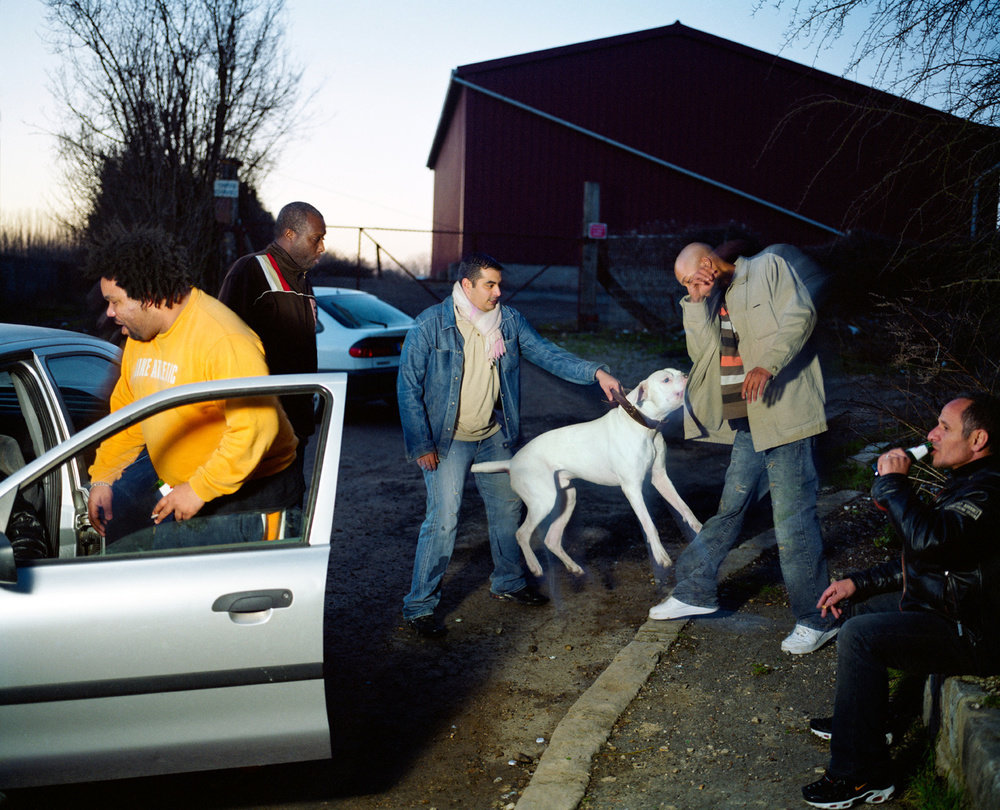Blum & Poe Broadcasts presents free and public access to scholarship and writerly ponderings from our publications archives and network.
In focus this week—an excerpt from a conversation with Mohamed Bourouissa and Okwui Enwezor from the catalogue accompanying the 2017 exhibition Mohamed Bourouissa: Urban Riders at the Barnes Foundation, Philadelphia (Philadelphia: Barnes Foundation; Paris: Kamel Mennour, 2017).
Link to the catalogue here.
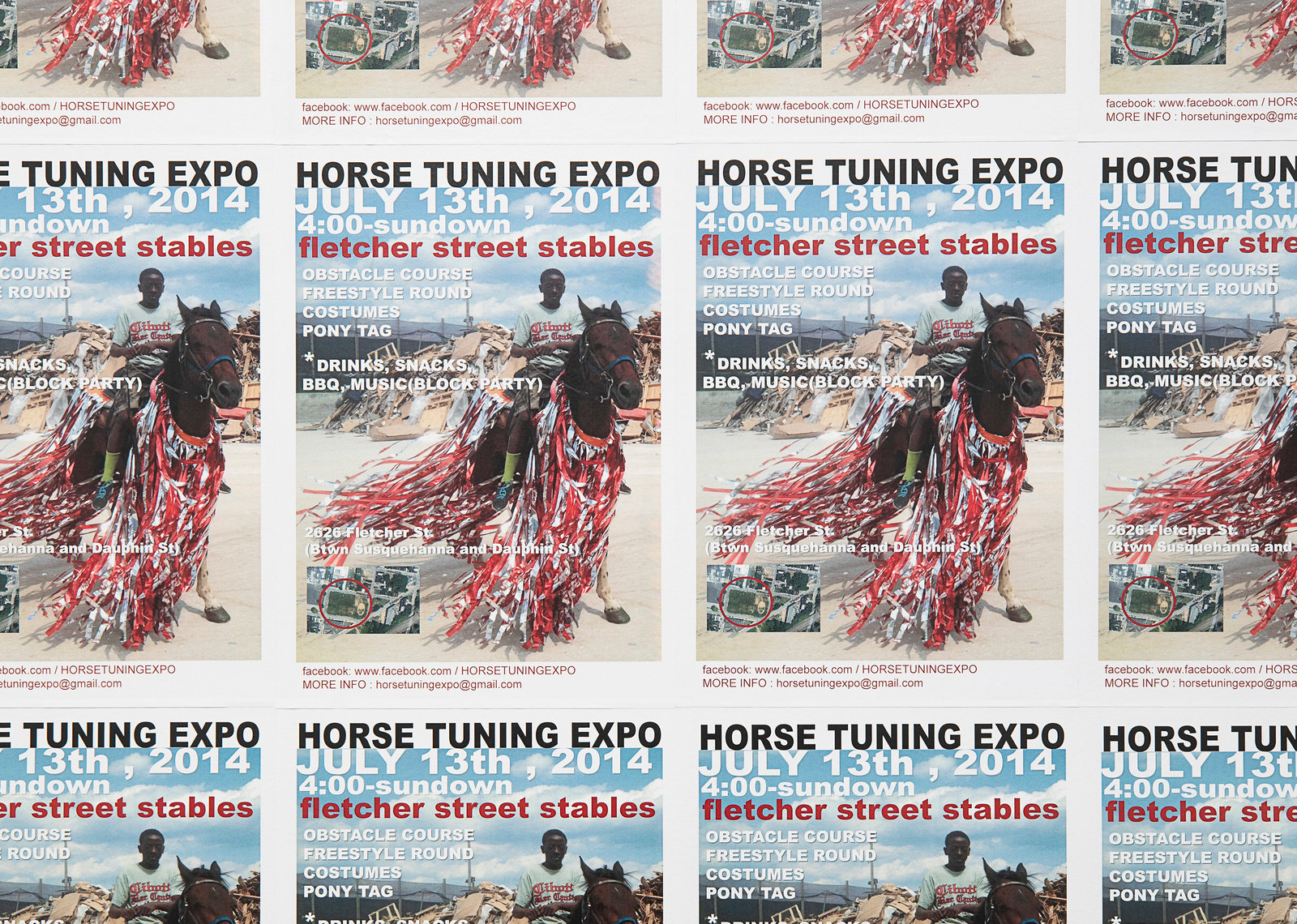

Mohamed Bourouissa & Okwui Enwezor
Okwui Enwezor: Mohamed, I thought that we should start with your beginnings and your decisions as an artist over the last ten years.
Mohamed Bourouissa: My first well-known series of photographs is Périphérique (2005-2008). [1] But first I’d like to talk about another work, one I did in Châtelet-Les Halles between 2003 and 2005. It was such a specific place in Paris, where a lot of young people from the banlieues (suburbs) would meet up wearing Lacoste clothes. [2] The brand was very popular in these Paris neighborhoods, even though originally these clothes were bought by the well-off. It’s interesting how young people from the banlieues adopted them and used them to define their identity. Nous sommes Halles (We Are Halles) (2003-2005) was my first photographic work: it was the real beginning for me. It marked my decision to work in photography and make my camera my primary tool.
After that I began to work on Périphérique, which was more complex. I conceived scenes and I composed them like paintings using friends but also people I met in different neighborhoods especially for this project.
Before the Châtelet-Les Halles project, what were you doing for school? What did you study?
I studied painting, notably at the Sorbonne between 1998 and 2003. I used to draw, paint, and do a lot of graffiti in the streets. But I was more focused on painting: I painted self-portraits and portraits of friends. One day, when I moved, I left a lot of them behind and lost them. Some ended up in the trash.
You deliberately abandoned your paintings.
Exactly.
It’s interesting that the shift in your work had to do with saying goodbye to painting. How did this occur? Was it a conscious decision to leave your paintings behind, to erase this past?
I think it was seeing these works by Jamel Shabazz, a 1980s photographer. He made this handsome book, Back in the Days. [3] At the time, I was painting a lot and I saw something so human in his pictures. He was showing the people of his community. I said to myself: I want to do exactly the same thing in France. I want to represent people like me, see them in pictures. Twenty years ago in France, there were not a lot of images of Algerian or black people in books; if there were, they were more sociological or ethnographic in nature. It was not about portraying their essence. For me, photography was a more direct medium for doing that than painting. It had more impact.
This makes it clear that the point of departure in your work is, in some way, a critique of the representation of the other. The role that images play within the channels of distribution, in which the absence and the presence of the other is, in a sense, defined not merely by the apparatus but by the apparatus of the institutional force, whether it is media or government, and this was what led you to work in Châtelet-Les Halles.
Exactly. It was a sort of critique of non-visibility—or perhaps pejorative visibility—that pushed me to take a stand.
© ADAGP Mohamed Bourouissa
© ADAGP Mohamed Bourouissa
Talk a little more about this first project, because it seems to have led naturally to Périphérique.
Coming from the Paris banlieues, I was interested in the subject. But another factor is friendship. The idea was to represent people I like, people around me, and to offer a different image of them, from the inside, to make people think differently about the suburbs. In Nous sommes Halles or Périphérique, the idea was the same: creating images and at the same time playing with them. I wanted to portray my friends the way I saw them and not the way the world saw us. In the Périphérique series, I wanted to create painterly forms and of course there was a political implication. It was very simple: I wanted to create something beautiful and well composed, like the paintings I used to study. I wanted to show off the beauty that I saw around me, and reaching this aesthetic level was a kind of engagement in itself. For me, beauty can be political.
We will get to the politics of the image that is so much a part of the complexity of your work. But you’ve just touched on something important, that first of all this is a representation of friendship. So this is an attempt to humanize your friends as social subjects, but, at the same time as being a portrayal of friendship, Périphérique is also an analysis of the social conditions in which your subjects are embedded. And this brings us to the political dimension, because here we are caught up in the politics of representation and the politics of subjectivity. Talk a little about the relationship between these two things: the subjectivity of your friends and the politics of representation that naturally led to you working with what we would consider to be a very classical format, the “tableau vivant.”
When I talk about friendship, it’s more to say that we all shared a certain vision of the world. We were from the suburbs, which means we were outsiders. Through this friendship and this shared thinking, it was possible to position ourselves in relation to the world, outside vs inside, exterior vs interior. At one time, 1995-1997, there was a periphery and a center. Now I see it is more complex: the periphery can be the center of where you are. There are centers everywhere. This common thinking allowed us to see the world through our own eyes. Saying that is obviously political. Our peripheral vision forced us to analyze things in another way. How can we see the world? Through what prism? These were our concerns. It depends on what you mean by “social conditions.” There are conditions tied to the fact of living in public housing or in certain neighborhoods. These conditions produce certain forms of thinking and for me this is more interesting than the living conditions themselves.
Well, maybe the issue is that the title of this project—Périphérique—is double edged. On the one hand, Périphérique represents a place, a territory, and on the other hand, it represents an imaginary world, a territory of exclusion, a territory of marginality, and so on. So some of these social conditions are already inscribed in your analysis. And you came to prominence with this work at a time when the banlieue was very much in the media. The riots were in the news. So you were already conscious of the social question of the périphérique, which is both a physical place and a non-place, a mental space, a psycho-geography of this group of inhabitants and their relationship to the bigger picture. Is this how you thought of this work?
I made Nous sommes Halles in Châtelet-Les Halles, in the street. Then I enrolled in the École nationale supérieure des Arts Décoratifs in Paris and I decided to bring friends into the studio and photograph them against a white wall. I started with very simple portraits, and gradually I realized, we realized, that there was a tension between being seen and being looked at. These friends started inviting me to the banlieues where they lived. I remember exactly when the series Périphérique began. In 2005 there were the riots and I made a first photo called La Fenêtre (The Window). I wanted to express the tension between a state and a population of Maghreb and African origin, between the government and this community. In this image, two guys with tattoos on their backs are looking at each other. It was the first photo where I tried to capture the tension in the relationship between the context we were in, a reality, and an artistic point of view.
Would you say that this was your first successful picture, because it describes all these issues?
The “success” is that of the entire series, not this particular image. After La Fenêtre, I worked on many other compositions. I was very interested in creating different tableaux.
I understand, but I’m wondering about the specificity of the construct that you are forming in this picture, because the visual quality is very important to you, because it communicates and conveys the meaning. I’d like to go back to the question of the artistic nature of the work because here you’re developing an idea of the artist and the relationship of the artist to the image and you speak about a tableau. Why was the tableau the way for you to explore these subjects?
It was all about creating a language, creating a tension in the image. It was related to the riots. It was the way for me to understand what they meant. It was part of the language I was using. I wanted to bring it into another aesthetic dimension. For me, this dimension, this beauty, can be totally subversive. I wanted to work on very beautiful pictures because I did not want to make documentary pictures. I wanted to reconstruct or rethink the images, not just make pictures of real-life scenes.
So you were very clearly inscribing your work within the tradition of image-making that contains historical subjects and you wanted to bring your subjects to life, make them visible.
Exactly, there is this desire to integrate. As I mentioned, I studied art history at the Sorbonne, where I took a lot of classes on painting. I was very interested in the Renaissance. All the historical paintings were very intriguing to me. One day, I realized that I wanted to put “my people” and these subjects that were mine on the same level as the subjects and the characters of the great paintings of the past. I wanted to raise them to the same level. It was a simple idea, but it was very important to me.
Ritual is an important dimension of your work, rituals of masculinity, for example, in Périphérique and your other works: did you make a conscious decision to explore the issue?
Yes, I use a lot of male models. I think it’s connected to the question of friendship, as you said, with the people who were around me at that time. That context, this form of masculinity shaped me. Maybe it’s a way of questioning the place of men in today’s society.
And this is also very connected to Horse Day, about which we’ll talk next. I just wanted to point out some elements that seem to recur in your work. An important one is the idea of research. Your work is very much predicated on it. Can you describe how you start each project, and the relationship of research to the completion of a body of work?
That depends on the situation or the context I’m in. Obviously, there are direct relationships. Often my projects are a reflection of different things that I’m reading. Reading about Frantz Fanon and his death in an American hospital inspired my leaving for the US. Fanon greatly influenced the Black Panthers. I am influenced by American culture; American culture is part of my culture. There was the question of the Western, which was fundamental. Then there’s this community in Philadelphia that I really wanted to work with. It really haunted me. Again, there were the Black Panthers—and Fanon—and music too. And suddenly everything crystalized. It’s never just about one thing—different things come together—and I said: OK, I want to go there to find the answers to my questions.
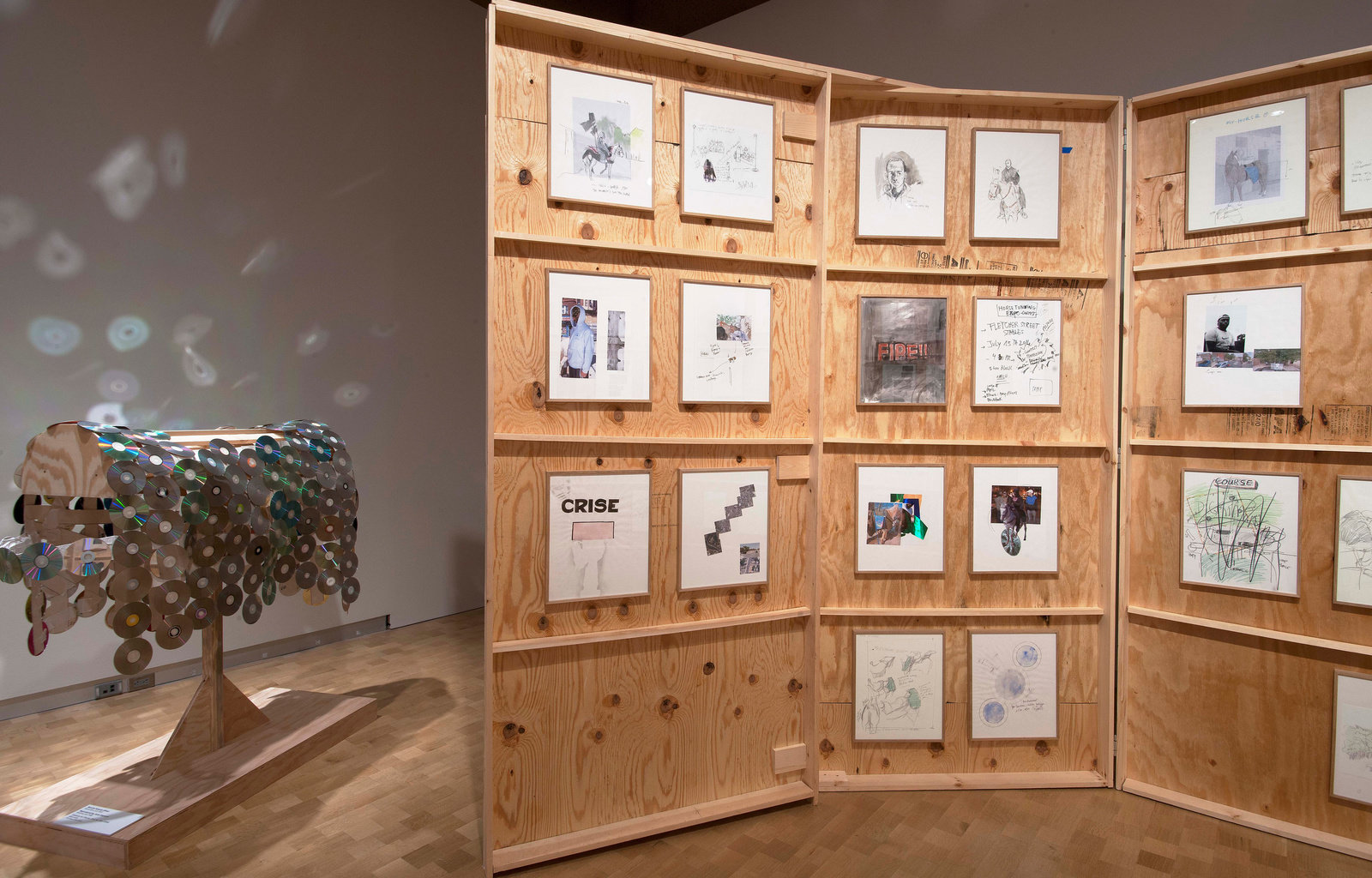

Before you went to Philadelphia, what did you think you were going to find?
Alterity, I think. I don’t like to talk a lot about Fanon, because it’s very personal for me, but I was interested in the way he was with others. When he was in Blida, Algeria, it was difficult for him to treat the sick, and he started to become interested in the culture and to understand exactly what was going on inside the country before understanding how to help. I am not saying it is the same, but I was interested in the way he tried to understand where he was. The territory I create is not about the country but about the mentality and the territory. For me, it was so interesting to go to Philadelphia and meet the people and create the project with them. Fascination certainly played its part, but I also needed to succeed in becoming part of the territory, you know what I mean? It was more organic. The first time I saw a picture of the Fletcher Street riders, I decided to go and meet them. I was there at first for three weeks, and in the beginning I just wanted to make a movie with them, and then I realized it was not enough to go and make a movie, to document. I wanted to do something a little deeper with their cooperation.
We are slowly constructing a triangle—Algeria, France, and the US—that plays a role in your work. It’s becoming more pronounced and it’s a sort of critical approach. How do the Algerian, French, and American contexts that you work into your practice affect your thinking as an artist and your work?
I have been living in France for years, since 1983, but American culture is a big part of my life. I was born in Algeria and grew up there too and of course it had a big influence. But what really matters to me is that you can create your own territory. It is a question of rethinking things, rather than having a certain form of identity. I produce my own territory and this territory is the result of accidental events.
I am not in any way trying to suggest that your work is about these places. But there are evocations in the works that touch on questions that one might relate to these places. You yourself were talking about reading Fanon prior to going to Philadelphia, and you were talking about Fanon’s work in Blida—
Yes, he died in the US.
—among the inmates in the psychiatric hospital. And you talked about Fanon’s influence on the Black Panthers later on, and this was another important point for looking at the conditions for the alterity that you were looking for, and now there is obviously something else that connects you to Fanon, and this is France, and Fanon’s critique of colonial mentality. You brought this up and I am interested in Fanon’s role in the elaboration of the Horse Day project.
America really is a territory; it’s such a segregated country. In Philadelphia you can see this. The African Americans have to be here, the Mexicans there. In France, and in Algeria too, you have segregation but it’s more diffused. In the US it’s very, very clear, it’s very violent.
So it is a kind of territory of violence.
Exactly. In the end, I was there for a long time—eight months. I thought, I have to bring people from outside, from other areas, into this place. I have to bring a lot of people here. For example, when I made Périphérique, I liked the idea of bringing people from outside the neighborhood and creating the conditions for doing something together there. This is all about alterity. Fanon had this intelligence, beyond the question of colonialism. For me, this notion of alterity is more about how to share, how to exchange something, it’s a part of the economy too.
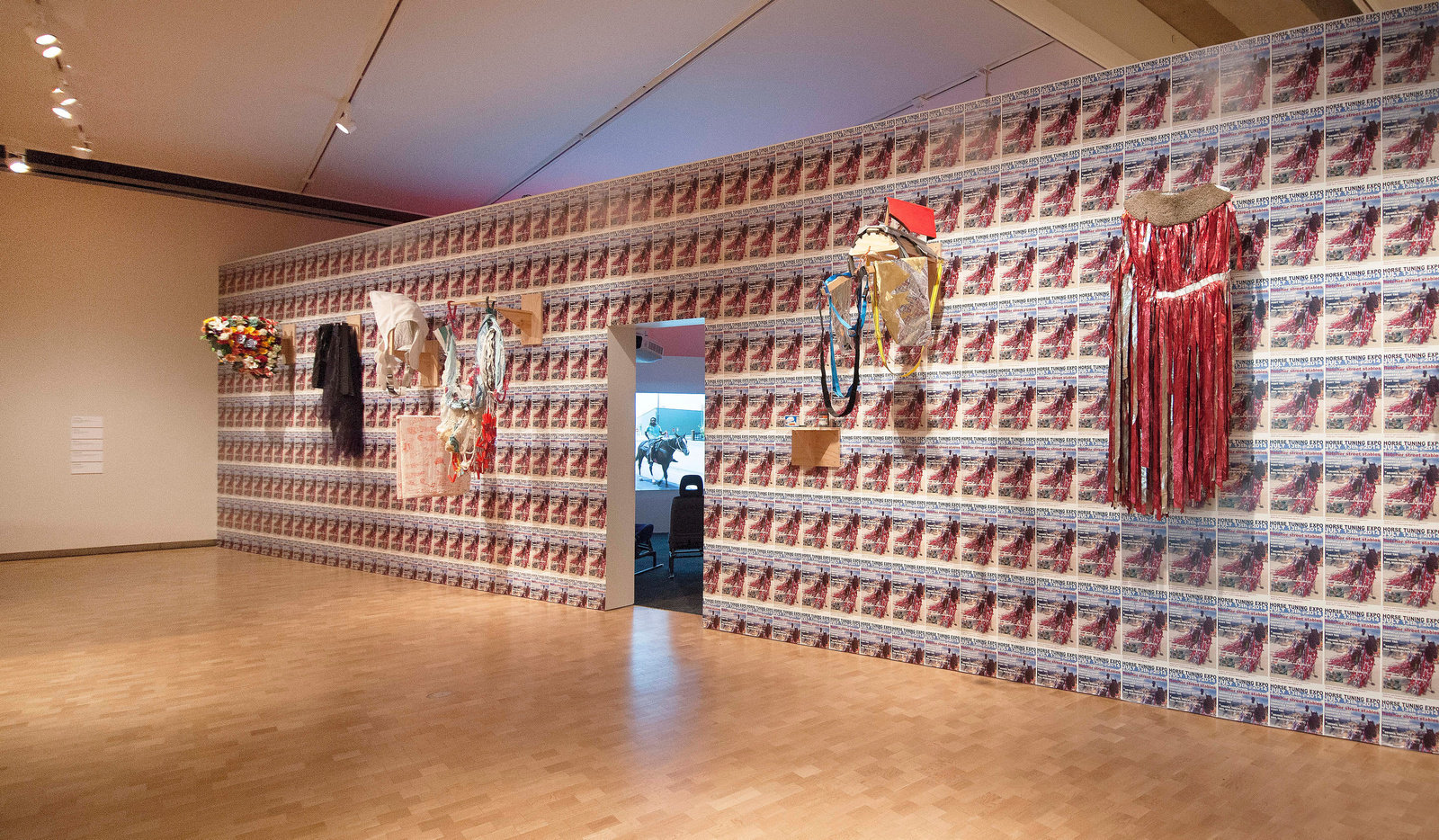

Horse Day seems to be one of your longest projects. You have been preoccupied with this project for how many years now?
Almost four years.
Where do you see the conclusion of Horse Day? Is it going to be in the presentation of this exhibition at the Barnes Foundation?
Now, I know exactly. My analysis of this project is more precise today than it was when I left for the US. It was very intense but also very difficult for me to accomplish the Horse Day project. It was difficult to be accepted by the Fletcher Street community, because I come from Europe. We used the same words but they didn’t mean the same thing. To answer you, I may conclude the project at the Barnes with a performance.
Obviously, this project is very important in the development of your work. What fascinated you about this particular community? What made you want to work in it?
It was very subversive, absolutely unusual for me, the idea of black men riding horses. I did not know much about the history of this phenomenon, but I felt very interested, certainly, because of my roots in France.
What was common in this ritual of transgression was the image of the cowboy, the frontier.
The first scene in my movie shows a guy talking about John Wayne. I decided to deconstruct this image too, this representation of the cowboy that we have in our mind.
So in a way, it’s a critique of masculinity, because John Wayne is part of the iconography of American masculinity. Your project isn’t the only subversion; there’s also subversion on the part of the characters you’re working with, who are using the cowboy as an emblem of a narrative of domination. You speak of segregation. Why was what you confronted in this urban context of Philadelphia so shocking? And what did you do with it?
I didn’t say shocking, but it is true that the neighborhoods are really divided. You can feel that there are real rifts between areas, you can feel it physically, when you turn the corner and it goes from black to white. I think it is less like that now, but when I was there it was very much like this.
You mentioned your interest in alterity, self-alterity, working with your friends, and so on. Another notion in your work is resistance. Where does it come from and what do you aim to do with it?
I have to be very careful with this word because in France, the idea of resistance is very much associated with the French Resistance during the Second World War. I don’t know if the best word for my work is “resistance.” Maybe there is another word. Do you think we can find another word?
We can definitely find another word! But I want to use this particular word because of something that you explore in your work: I’d call it the liminal, the edge. Your work is often ways of being, ways of life. In Périphérique, the dimension between visibility and invisibility plays with resistance—to stereotyping, marginality, depersonalization. Your work grapples with these questions in highly conceptual ways—even the project you did with La Monnaie de Paris (the Paris Mint), where the minting of the coins, the engraving of the image on the coin is itself a proposal, if you will, not only about representation but also about resistance to certain types of representation.
For me it is more about creating a state of tension, a sort of electrical resistance, if you like. For me, the clearest image of resistance would be this electrical aspect of things: how to make things visible, how to connect things and bring them into a state of tension. For example with All-In, which I made at La Monnaie de Paris, the aim was to bring together two contexts: that of La Monnaie, which had been offered to me, and the universe of Booba, [4] which is part of my culture, in order to create a state of tension, a sort of new place where these two worlds can co-exist, a sort of third place that emerges from them.
[1] The Périphérique is the limited-access highway that encircles Paris. It is the boundary between the city and its suburbs.
[2] Although suburbs in France, like those in other countries, vary socio-economically, the term “banlieue” is increasingly associated with low-income housing projects and poor immigrants.
[3] Jamal Shabazz, Back in the Days (New York: Powerhouse Books, 2001).
[4] Booba [Elie Yaffa] is a French rapper.
Excerpted from “Mohamed Bourouissa & Okwui Enwezor, Conversation,” in Mohamed Bourouissa, exh. cat. (Philadelphia: Barnes Foundation; Paris: Kamel Mennour, 2017), © The Barnes Foundation, Philadelphia. Reproduced by permission.
